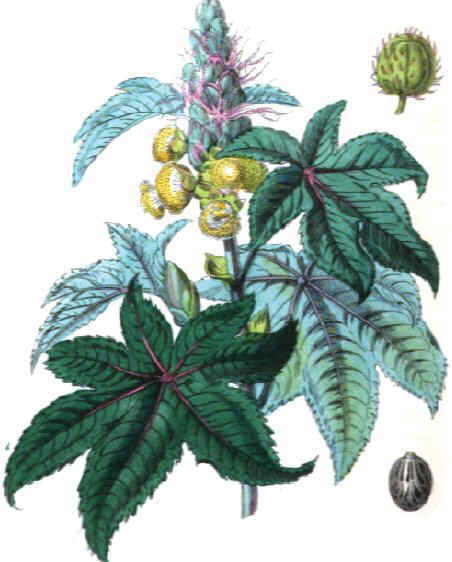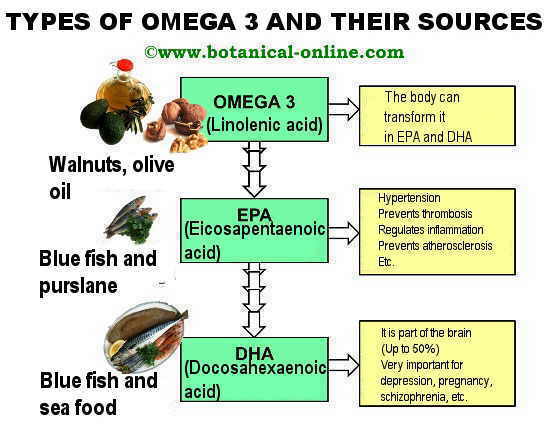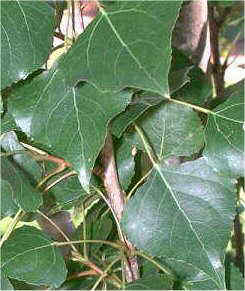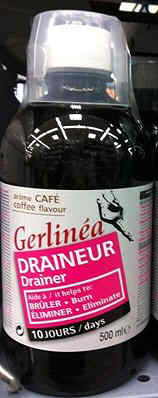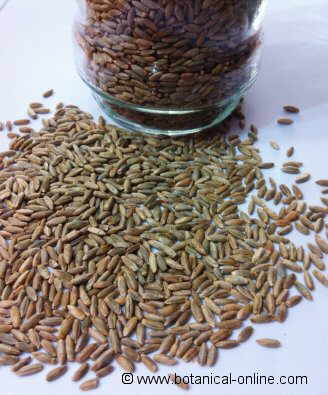Contents
- 1 What is an acidic or basic / alkalizing food?
- 1.1 Effects of the alkaline diet
- 1.2 How to change the alkalinity of the body?
- 1.3 What is an alkalizing or alkaline diet?
- 1.4 How is the body acidified?
- 1.5 Diet does not change the pH of the blood
- 1.6 Warburg, cancer and acidity of the organism
- 1.7 How is the body’s pH maintained?
- 1.8 Acidifying diet and osteoporosis
- 1.9 How is an acidifying or basifying food scientifically classified?
- 1.10 Tables of acidic and alkaline foods
- 1.11 Acidic urine and alkaline urine problems
- 1.12 Does the diet work according to the pH or alkaline diet?
- 1.13 How to make a more alkalizing or basifying diet?
- 1.14 Clarification of terms
What is an acidic or basic / alkalizing food?
The acidifying or alkalizing condition of a food refers to the residue that it leaves in the urine after being metabolized.

The type of diet changes the pH of the urine. Most of the metabolic residues are soluble in an alkaline environment, therefore, an alkaline urine will help the substances to be solubilized and eliminated more easily.
Effects of the alkaline diet
A diet that produces highly acidic urine can lead to long-term problems such as kidney stones. Excess fat, sugar and meat in the diet have very acidic residues, a lot of exercise and situations of fasting or weight loss phases.
However, alkaline urine also has its drawbacks. People with UTIs due to candida (candidiasis) should know that this infection spreads in alkaline urine, so an acidifying diet will be appropriate for a few days of treatment. Diets rich in vegetables and fruits produce highly alkaline urine.
How to change the alkalinity of the body?
The alkalinity or acidity of the urine changes daily depending on the type of diet, the time of day, fasting, etc.
The alkaline pH is between 7 and 10. Generally the urine has levels that can range between 4.5 and 8. An acidic urine for a long time (produced by an acidifying diet), favors the formation of kidney stones.
Food can lower the pH of the urine (acidifying diets) or increase it (basifying or alkalizing diets).
You can test this theory by measuring the pH of your urine with a pH test strip (available in pharmacies). Extreme values (1 or 14) will never appear, but it can be observed that a very acidifying diet (rich in meats) will cause the color of the meter to be more reddish (acidic urine), while a balanced diet rich in vegetables will cause the meter color will be greener (urine more alkaline). |
* Note: Alkaline and basic mean the same
What is an alkalizing or alkaline diet?
An alkaline diet is a type of diet that produces urine of basic or alkaline pH (both words mean the same) and thus helps to eliminate more residual substances from the body that are soluble or easier to eliminate with an alkaline medium of the urine.
How is the body acidified?
Overeating, stress, too much exercise, losing weight, and the metabolism itself produces slightly acidifying substances that must be eliminated from the body (ketone bodies, lactic acid, purines, etc.).
For example, the first urine in the morning is the most acidic, because it contains the substances resulting from the metabolism of the whole night.
Diet does not change the pH of the blood
The diet does not change the pH of the blood because the body always keeps it stable. Blood has a neutral, slightly alkaline (basic) pH, between 7.4 and 7.45. Just a few tenths of pH change could cause many problems, as enzymes and proteins would be inactivated, resulting in fatal consequences.
Therefore, it is logically impossible to change the pH of the blood with the diet, because the body has mechanisms to control it always at the same levels. Blood pH is maintained thanks to homeostasis systems such as bicarbonate buffer.
In addition, there are many environments with different pH in the body. Each fluid in the body has its pH determined to perform its functions: saliva, hydrochloric acid from the stomach, bile, pancreatic juices, urine…
Many theories are based on the acidity of the extracellular environment, in which many cells exchange and waste substances are dissolved. The Austrian doctor Alfred Pischinger (1899-1983) was the first to study in depth this medium, which according to him, an alteration of the extracellular environment can be the initiation (or the cause) of diseases such as cancer.
Warburg, cancer and acidity of the organism
The German scientist Otto Heinrich Warburg (1883-1970), who was awarded the Nobel Prize in 1931, discovered in his work “Discovery of the nature and mode of action of the respiratory enzyme” that cancer cells develop in a acidic environment of the body and that have an anaerobic metabolism (they do not require oxygen to live). It is not known for certain whether the acidic environment is a cause or a consequence of the tumor (if the tumor itself produces the acidity, or if an acidic environment produces the tumor). It is a theory that still raises many unknowns.
Many theories of pH diets or alkaline diets have been based on these observations, ensuring that with an alkaline environment of the body it is possible to avoid diseases such as cancer. However, as mentioned above, diet alone cannot change the acidity of the intracellular environment. Food only directly influences the pH of the urine.
How is the body’s pH maintained?
An acidifying diet causes metabolic acidosis, the body must withdraw (or stop absorbing) calcium from the bones to counteract this acidity, which leads to a loss of bone mass. As nature is wise, the body has a giant reserve of basifying minerals: bones.
| The dietary excess of animal protein, salt, sugar, and carbonated cola ingested by the general population in developed countries, could be related to the growing epidemic of diseases such as osteoporosis and other bone diseases (hip fractures…) *See: Foods harmful to bones |
Acidifying diet and osteoporosis

In countries like the United States, where the consumption of cola in the population was very high, it was observed that the incidence of bone diseases, such as osteoporosis, was very high.
One of the influencing factors (in addition to other causes) was probably acidifying poor dietary habits, including a lack of vegetables, excess meat, refined sugar and excessive intake of carbonated cola.
For this reason, the acidifying cola of the meals was replaced by milk (rich in calcium, basifying mineral). If we think about it, we will surely remember a series or movie in which milk is consumed instead of other drinks at mealtime.
How is an acidifying or basifying food scientifically classified?
To classify foods according to their acidifying or alkalizing effect on urine, the PRAL value (Potential Renal Acid Load) is used. It is calculated taking into account the proteins of a food, its content in phosphorus, potassium, calcium and magnesium.
Positive PRAL values (acid urine) occur in meat, fish, shellfish, dairy products, legumes, cereals, nuts and seeds, given their higher protein content.
Negative PRAL values (alkaline urine) occur in foods that do not contain protein and that do contain the other minerals, such as fruits and vegetables, but also in refined foods such as sugar or butter.
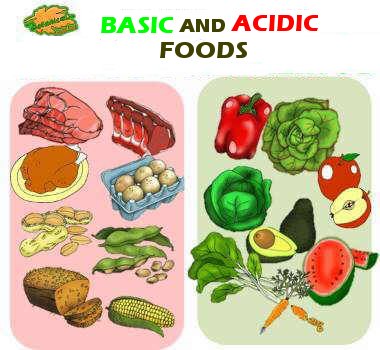
Acidic and alkaline foods sheet according to the pH diet. This classification is for guidance and alkalizing urine foods are healthy for many other reasons
Tables of acidic and alkaline foods
Most alkaline or pH diets do not rely on PRAL values to classify foods according to whether they are acidic or alkaline, but instead take into account other components of the food. There are no official tables, and sometimes the classification is governed by criteria that do not have to do with the residue of the food in the urine, but by other healthy qualities of the food.
Because of its mineral composition and the balance between all its minerals, they are classified as:
- Calcium, sodium, potassium, zinc, magnesium and manganese are minerals that are abundant in mainly alkaline foods and are found mainly in vegetables, such as vegetables, vegetables, fruits, legumes and whole grains. However, these foods are considered healthy for many other reasons. On the other hand, not all produce alkaline urine, since for example, blueberries are known to produce acidic urine that helps fight against yeast infections.
- Phosphorus (abundant in proteins), sulfur, iron, iodine, and chlorine are acidifying minerals. However, they are also healthy because they are essential for life.
- Carbonic acid in carbonated drinks or colas (soft drinks) is very acidifying.
- Overeating, excess refined sugar, and eating a lot of fat also produce slightly acidifying substances due to increased CO2 and waste from your metabolism.
Most natural foods contain acidic and alkaline minerals, and it is the balance between these that determines their effects on the body, that is, a balanced diet.
| Food | Approximate composition | Classification |
| Legumes | Proteins, magnesium, calcium, potassium, iron, manganese, zinc,… | Acidifying |
| Milk and yoghourt | Proteins, calcium,… | Basifying |
| Cheese | Proteins, calcium,… | Acidifying |
| Vegetables | Magnesium, calcium, potassium,… | Basifying |
| Fruit | Potassium, calcium, magnesium,… | Basifying |
| Meat | Proteins, iron,… | Acidifying |
| Fish | Proteins, iodine, essential fatty acids,… | Acidifying |
Acidic urine and alkaline urine problems
Acidic urine favors the precipitation and formation of kidney stones by calcium oxalate or urates.
Alkaline urine can also promote some types of urinary tract infections that develop in slightly alkaline environments, such as Candida albicans. In this type of infections it is recommended to reduce the consumption of fruits and enhance whole grains, legumes and nuts for a few days.
Does the diet work according to the pH or alkaline diet?
The theory of acidic and alkaline foods and pH is insufficient to explain all the factors that influence a healthy diet. It would be a mistake to base a balanced diet on consuming only basifying products.
For example, refined sugar has a neutral PRAL value because it contains neither protein nor minerals. On the other hand, it is known that it can cause problems such as tooth decay or diabetes if taken in excessive amounts, which is what currently occurs in the majority of the population.
Nor can you do without “acidifying” foods because they are those that contain more protein. Proteins are essential for our body and are needed for life.
In general, it is recommended that basifying foods predominate, mainly because they are the group of vegetables, and a vegetarian diet has been shown to provide many health benefits, due to the minerals, vitamins and phytochemicals of these foods.
A balance between acidifying and basifying foods is recommended, because both are important for our body. It is preferable the predominance of alkaline foods such as vegetables, which will help eliminate metabolic residues, in addition to providing many vitamins and minerals.
| Acidic foods are not “bad”, what is detrimental to health is not balancing your intake with plenty of whole grains, legumes, nuts, seeds, vegetables and fruits. |
How to make a more alkalizing or basifying diet?
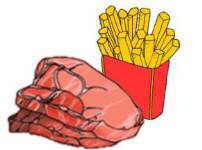
Balance acidifying foods with alkaline foods. The current problem is that the meats are accompanied by fried potatoes, carbonated colas, other sweets, and that the contribution of fruits and vegetables is scarce throughout the day. This practice is unhealthy for many other reasons besides generating acidic urine pH.
As in any healthy diet, it is recommended to avoid the consumption of foods with a lot of sugar (mainly chocolates, pastries, sugary cereals and other industrial products with a lot of sugar), and to avoid products with a lot of fat or bad fats (precooked, pizzas, sausages, processed meat, etc.).
- Drink herbal teas and broths during the day.
- Avoid industrial products and promote healthy breakfasts, snacks with nuts, oat flakes, muesli, dried fruit, fig bread, fresh fruit….
- Sweeten with honey instead of sugar.
Clarification of terms
“Acidifying and basifying or alkaline” are technical words used by chemists to determine the nature of a chemical substance dissolved in water, or in this case to measure the effect of a food on the pH of urine. It is difficult for us to adapt to using these words and we can sometimes confuse them. In the following table we clarify some possible confusions:
| Term | Meaning |
| Acid | Refers to the acidic taste perceived by the taste buds, like vinegar. We cannot rely on taste to determine whether a food produces acidic or alkaline urine. For example, a very acidic food is lemon, which produces basifying urine; and another, the cola, very acidifying. |
| Acid | Concerning an irritating chemical substance. |
| Fatty acid | Fatty acids are the units or molecules that make up fats. Its name is due to the fact that its chemical structure contains an “acid group”. The “groups”, in chemistry, are a set of atoms that are united in a certain way always and that are already known by a common name. For example, the “acid group” or carboxyl, is formed by the atoms of Carbon (C), Oxygen (O) and Hydrogen (H). |
| Amino acid | Amino acids are the units or molecules that make up proteins. These owe their name to the fact that in their chemical structure they contain an “amino group” and an “acid group”. The “groups”, in chemistry, are a set of atoms that are united in a certain way always and that are already known by a common name. For example, the “amino group” is made up of Nitrogen (N) and Hydrogen (H) atoms. |
| Food acidifier | Refers to an acidifying additive. |
| Basic | Referring to a basal food, abundant in the diet; as are vegetables in the diet of man. |
![]() More information on food
More information on food

